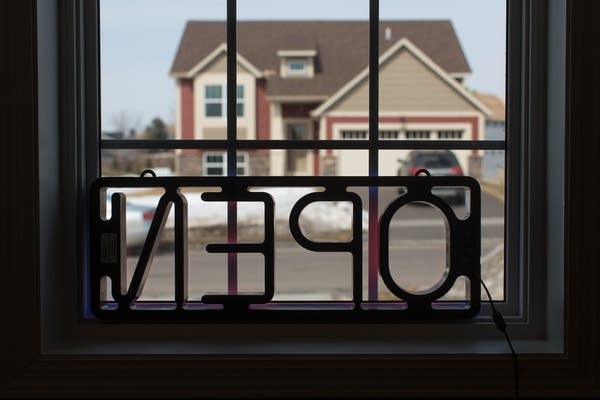Hammers swing for Twin Cities home builders as housing market recovers

Go Deeper.
Create an account or log in to save stories.
Like this?
Thanks for liking this story! We have added it to a list of your favorite stories.
Home builder Hans Hagen avoided building houses on spec in the housing boom. He saw the market getting overbuilt. And he's more of a custom builder anyway. There's a customer in hand before the first nail is fired.
But rising demand is changing his business. Workers here in Blaine are framing a house that Hagen started to build on spec. He didn't have a buyer lined up. But he knew he'd sell the place quickly. "People come out and say, 'I need something immediately.' Could be transferees or it could be people looking to downsize or whatever," Hagen said. "We're simply filling that niche."
That kind of talk hasn't been heard around here in a while. When the housing market crashed eight years ago, new home construction ground to a halt. Builders who had framed up houses before lining up a buyer got stuck with homes that wouldn't sell. Weak demand for new houses forced many builders out of the business.
Those who survived the worst of it are now enjoying a rebound. Many of the foreclosures that flooded the region in the Great Recession have been wrung from the market. That's put the supply of used homes for sale at a 10-year low, according to the Minneapolis Area Association of Realtors. New home inventories are slim, too. There were 421 finished vacant new homes for sale in the fourth quarter of 2013, less than a third of the supply available during the same period nine years earlier, according to the consulting firm Metrostudy.
Turn Up Your Support
MPR News helps you turn down the noise and build shared understanding. Turn up your support for this public resource and keep trusted journalism accessible to all.

That means home buyers are hungry for options, which they can find from builders who've got a few new houses ready to go.
Even just a few years ago, "the market was telling builders, 'Stay away. We don't need your services. We don't need you to build homes,'" said housing economist Elliot Eisenberg. "Times have turned."
Eisenberg said he's glad to see speculative building return. He compares it to the auto industry making cars without having customers lined up in advance. That's largely the home builder model in normal times, he said.
One impediment, Eisenberg notes, could be banks' long memories about unsuccessful loans they made.
When the housing market crashed, builders and developers couldn't find any buyers for the homes they'd built on spec. Banks were left holding the bag.
Starting in 2008, construction and land development loans at Minnesota's community banks had nearly five straight years of quarterly declines, data from the Federal Reserve Bank of Minneapolis show.
Many of the loans made back then were really risky, said Ron Feldman, the top banking regulator at the Minneapolis Fed.
"Loans were made to developers who, if they couldn't sell a given project, were unable to pay the loan back at all," Feldman said. "Now, if you make a loan to a developer who has many sources of income and isn't reliant on that one property, that's a loan that's a little safer."
But construction and land development loans started tracking up again in 2013. Experts say loans made today are generally much safer.





